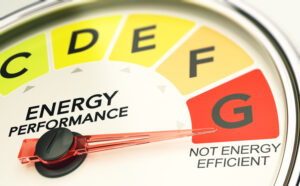How Your Heat Pump Heats and Cools Your Home
Heat pumps, adaptable to almost any application, are becoming increasingly popular in residences and businesses throughout Chattanooga, TN. For many people, the ability to save cash on electricity expenses is what makes them so appealing, but they also appreciate how heat pumps keep them comfortable in all climatic conditions. This guide describes why installing a heat pump is an excellent choice for energy-efficient indoor climate control.
Types of Heat Pumps
Heat pumps use various ground or air sources to move heat from one location to another. Ground-source and air-source heat pumps are the two most prevalent kinds of heat pumps.
Air-source heat pumps transfer heat between the interior and outdoor air and are commonly used in areas with moderate winters for both cooling and heating. Ground-source heat pumps, also known as geothermal heat pumps, transport heat from your home’s air to the Earth outside. These are costlier to install, but because the ground temperature remains consistent throughout the year, they’re usually more effective and have a reduced running cost.
How Does a Heat Pump Heat and Cool?
Heat pumps, despite their name, don’t produce heat; rather, they transfer it from one location to another. A furnace distributes heat throughout a house, whereas a heat pump draws heat from the outdoor air (even in frigid temps) and moves it to the interior air.
In cooling mode, a heat pump and an air conditioning system are practically similar, as they both absorb heat from the interior air and expel it through the outside unit. In the heating phase, the heat pump draws heat from the Earth or the outdoor air (even chilly air) and transfers it indoors.
How Does a Heat Pump Work in Cooling Mode?
One aspect of heat pump functioning and heat transfer has been that heat energy typically prefers to migrate to regions with lower temps and reduced pressure. Heat pumps depend on this physical characteristic by exposing heat to cooler, lower-pressure environments, allowing heat to move easily. Here’s how a heat pump functions:
- STEP 1: The interior coil, which serves as the evaporator, has an expansion mechanism through which it circulates liquid refrigerant. Blowing air from inside your home across the coils allows the refrigerant to capture heat energy. The vents in the house then distribute the ensuing cool air while the heat energy absorption process has led the coolant to heat and vaporize into gas form.
- STEP 2: The gas undergoes pressure as it travels through the outdoor compressor and heats up even more during the pressurization procedure. The outdoor unit’s condenser receives the heated, pressurized refrigerant then flows over the coils in the outside condenser.
- STEP 3: A fan in the external unit sweeps the coils that are acting as condenser tubes in cooling mode. Heat moves from the coolant to the outdoor air because the air outside is colder than the heated compressed gas refrigerant inside the coil. The refrigerant cools during this process and condenses, returning to a liquid form. The system then pumps the warm liquid refrigerant to the expanding valve at the interior units.
- STEP 4: The expansion valve significantly lowers the pressure of the heated liquid refrigerant, causing it to cool. The system then pumps the refrigerant, which is now liquid and cold, to the interior unit’s evaporator coil to restart the cycle.
How Does a Heat Pump Work in Heating Mode?
In heating mode, a heat pump works similarly to cooling mode, except that the reversing valve redirects the coolant flow. Because of the flow reversal, the heating source now becomes outdoor air (even when the outside temperature is low), and the heat energy transfers from the gas to inside the house. The outdoor coil now serves as an evaporator, while the interior coil serves as the condenser.
The heating process’s principles are the same. The cool liquid refrigerant absorbs heat energy in the outdoor coils, converting it to cold gas. The compressor then pressurizes the vapor, which increases its temperature.
The heated gas passes through the indoor coils where a fan transfers the heat through the vents, and the gas condenses into a warm liquid. As the warm liquid passes through the expansion valve, the released pressure converts it to a cool liquid and restarts the cycle.
Heat pumps are adaptable and energy-efficient HVAC systems. Contact Dalton Heating & Air for more details on the advantages of heat pump installation in Chattanooga, TN. Our service technicians can also conduct routine tune-ups to optimize efficiency and performance.
Image provided by iStock
You May Also Like

Why Does My Heat Pump in Ringgold, GA, Run Constantly?
Heat pumps tend to run in 10- to 20-minute heating and cooling cycles, depending in part on the temperature outside. Longer cycles… Continue Reading Why Does My Heat Pump in Ringgold, GA, Run Constantly?…

7 Common Myths About Ductless Mini-Splits in East Ridge, GA
Installing a new HVAC system for your home in East Ridge, GA, is a great way to ensure your home is comfortable.… Continue Reading 7 Common Myths About Ductless Mini-Splits in East Ridge, GA…

Signs It’s Time to Replace Your Old AC System in Collegedale, GA
Is your air conditioner working as well as it should? If not, it might be time to get a new AC system… Continue Reading Signs It’s Time to Replace Your Old AC System in Collegedale, GA…
